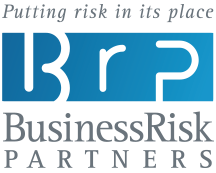By Judy Greenwald
published | Business Insurance
Documentation is essential for insurance brokers to protect themselves in errors and omissions lawsuits as policyholders who have been largely unsuccessful in obtaining business interruption coverage from their insurers eventually turn to them for compensation for their COVID-19-related losses, experts say.
So far, only a handful of agents and brokers have been named in coverage litigation stemming from COVID-19 claims, but “that number may well increase as times goes on,” said Kenneth Fall, chief litigation counsel at Marsh LLC in New York.
He spoke during the Minneapolis-based Professional Liability Underwriting Society’s virtual annual conference Tuesday.
“We’re clearly seeing a hardening market,” said Lisa Doherty, founder and CEO of Business Partners in Windsor, Connecticut. “As a national issue, it has become more difficult for policyholders.”
There is much more stringent underwriting, and insurers are issuing supplemental exposure applications to determine their COVID-related exposure, she said.
Rates and retentions are increasing, and insurers are trying to put COVID-related exclusions into policies, which is going to create exposure for brokers, Ms. Doherty said.
Mr. Fall said, “Any time you have a hardening market, you’re going to have a situation where more claims are contested and denied,” and ultimately there will be more E&O claims against brokers stemming from COVID-19.
Brokers must navigate the situation now, he said. “The key is going to be for brokers to clearly communicate exclusions and other nuances that are appearing in policies” and then to document their conversations with policyholders, Mr. Fall said.
More documentation is critical in a hardening market, agreed James Redeker, claims manager and vice president of claims at Westport Insurance Corp., a Westport, Connecticut-based unit of Swiss Re Ltd. Even identical wording may be interpreted differently by courts, he said.
“Make sure you document everything,” including situations where policyholders decline coverage, said session moderator Peter Biging, a partner with Goldberg Segalla LLP in New York, who is co-chair of his firm’s management and professional liability practice group.
“Most brokers of any size have a document management system of some kind, and often those systems are set up so they can make notes of important communications,” he said.
Plaintiff attorneys will ask for those notes if they are not in the system, Mr. Biging said.
“Look at the big picture,” he said. Do not get caught up in a specific policy, but look at the entire portfolio. He said in one case, involving a dispute, a policyholder who was very price-conscious, wrote in connection with another policy, “This is costing me a fortune. I don’t want it,” Mr. Biging said.
“Fight these early COVID-19 claims,” Mr. Redeker said. “Do not give plaintiffs a toehold to flood the courts with suits. It’ll be money well spent.”
“It’s really early days, so pay attention, be careful” and watch the situation, “because this is going to develop further,” Ms. Doherty said.
Other experts have also said the prospect of policyholders filing business interruption-related litigation against their brokers is hovering over the insurance brokers E&O market.
There also a whole host of operational issues to consider, said Mr. Biging said.
Brokers typically have insured in their office “and see them visually sign applications,” and that is not happening; previously brokers could visit locations and “eyeball” situations, and they are not necessarily doing that now; and there are issues related to brokers picking up their premium checks.
“There’s all these additional issues that could be rising up as a result of COVID-19,” Mr. Biging said.
Share this.
